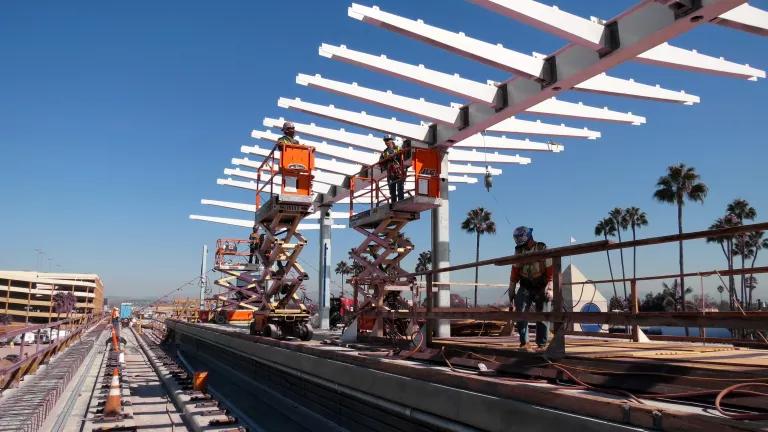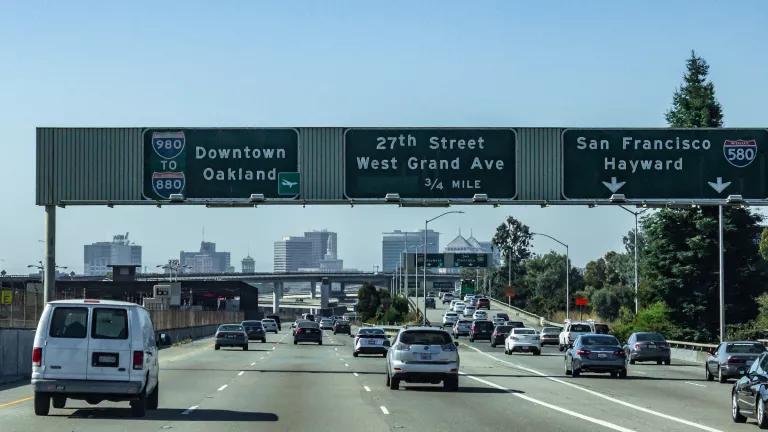Just as the holiday season was kicking-in to high gear, California scored a victory in the courtroom that will clean our air and save lives. On December 19, 2012, the United States District Court for the Eastern District of California dismissed a lawsuit that sought to invalidate California’s Truck and Bus Rule. This Rule will clean up the largest mobile source of particulate matter and smog-forming oxides of nitrogen in the state, and prevent approximately 3,500 premature deaths along the way. The Rule reduces air pollution from 1 million aging diesel trucks and buses by requiring vehicle retrofits and accelerated vehicle turnover. The result is that cleaner, less polluting vehicles will operate on California’s roadways.
In February 2011, the California Dump Truck Owners Association (also known as the California Construction Trucking Association) sued the state of California over the Rule and NRDC intervened to help defend the law. CDTOA argued that the costs of complying with the Truck and Bus Rule for its members was too high even though financial programs were made available to its members to help them comply with the Rule, and the State delayed implementation of the Rule based on the recession. CDTOA’s legal argument was that the Rule is preempted by the Federal Aviation Administration Authorization Act (FAAA), which prevents states from adopting laws that have a significant effect on the prices, routes, or services of federal motor carriers. CDTOA’s members are “federal motor carriers.” We responded that California has authority under the federal Clean Air Act to regulate air pollution from trucks on the road today, and that there was no evidence that Congress intended the FAAA to restrict that authority.
During the course of the lawsuit, U.S. EPA approved the Truck and Bus Rule as part of California’s plan to meet federal air quality standards. Last month, the Court dismissed CDTOA’s lawsuit, finding that CDTOA’s legal challenge implicates the correctness of EPA’s approval of the Truck and Bus Rule, and that under the federal Clean Air Act only the Court of Appeals can hear such cases. The court went on to hold, as an alternative basis for dismissing the case, that EPA was a “necessary and indispensable” party to the district court action.
This means that California can move forward with its life-saving regulation.
Heavy-duty trucks, like those used in the construction industry as well as those that haul freight emit a toxic brew of pollutants, including diesel particulate matter (diesel PM). Despite the established scientific body of evidence linking diesel exhaust to illness and death, representatives of the trucking industry continually underplay the public health implications of their operations. On a public radio program discussing the Rule, Joe Rajkovacz of the California Construction Trucking Association stated that the “health consequences of PM exposure are drastically overblown by the advocates of more regulation.” Thankfully, however, science continues to challenge the myopia of industry.
- In 1998, the California Air Resources Board identified diesel PM as a toxic air contaminant associated with a range of diseases including asthma, heart disease and premature death.
- A September 2012 study concluded that 8% of childhood asthma cases in Los Angeles County are attributed at least in part to living close to a major road (less than 250 feet). My colleague, Diane Bailey, has blogged about this study and others explaining the dangers of diesel exhaust.
- The World Health Organization has also concluded that diesel engine exhaust is a carcinogen based on evidence that exposure is associated with an increased risk for lung cancer.
Just yesterday, the LA Times’ editorial staff urged the public to support U.S. EPA’s new restrictions on fine PM, also known as “soot.” The editorial underscored the importance of such regulations for the LA region and Central Valley, which suffer tremendously from pollution emitted by the tailpipes of old diesel trucks and farm equipment. The Times rebuked industry’s opposition to these important regulations, stating:
Industry and conservative Republicans have fought against tighter soot restrictions for years, arguing that the EPA would be killing jobs. But industry doesn't have the right to kill or sicken people in order to keep expenses low. The EPA estimates the cost to industry at somewhere between $53 million and $350 million a year; the estimated savings by preventing illness, hospitalization and work loss is estimated at a minimum of $3.7 billion a year. The public should not subsidize industry's indifference.
I couldn’t agree more.
My New Years’ Resolution: continue to defend our clean air victories. They are worth fighting for.




